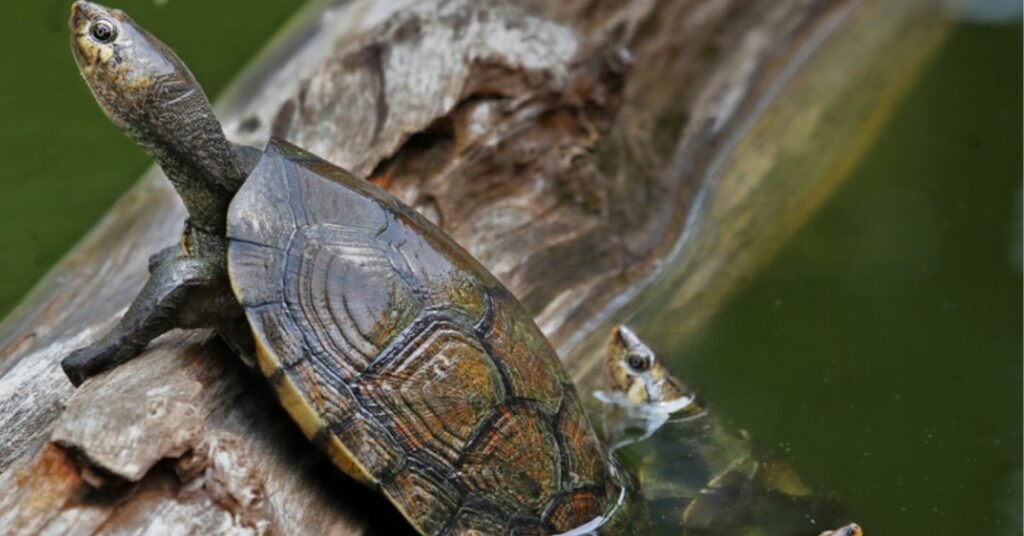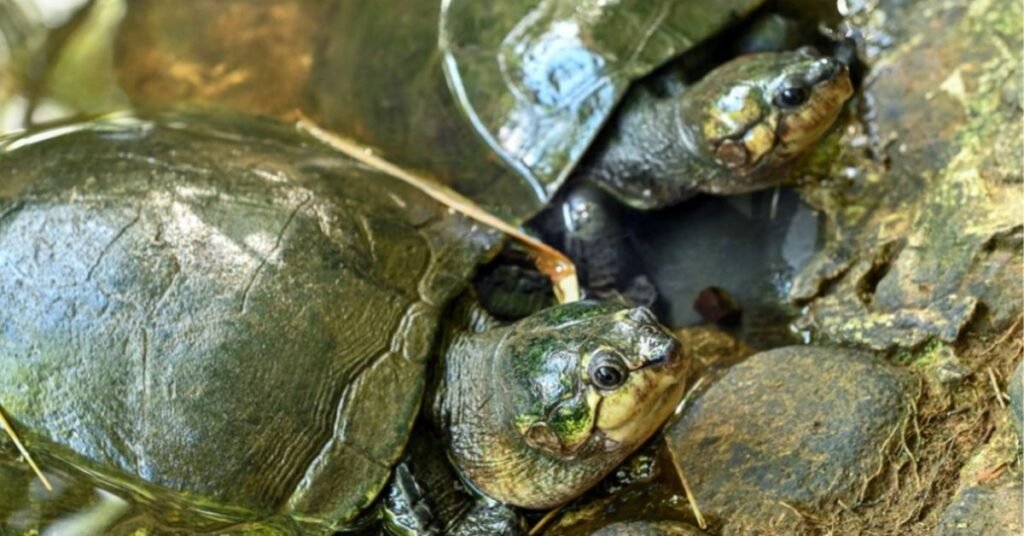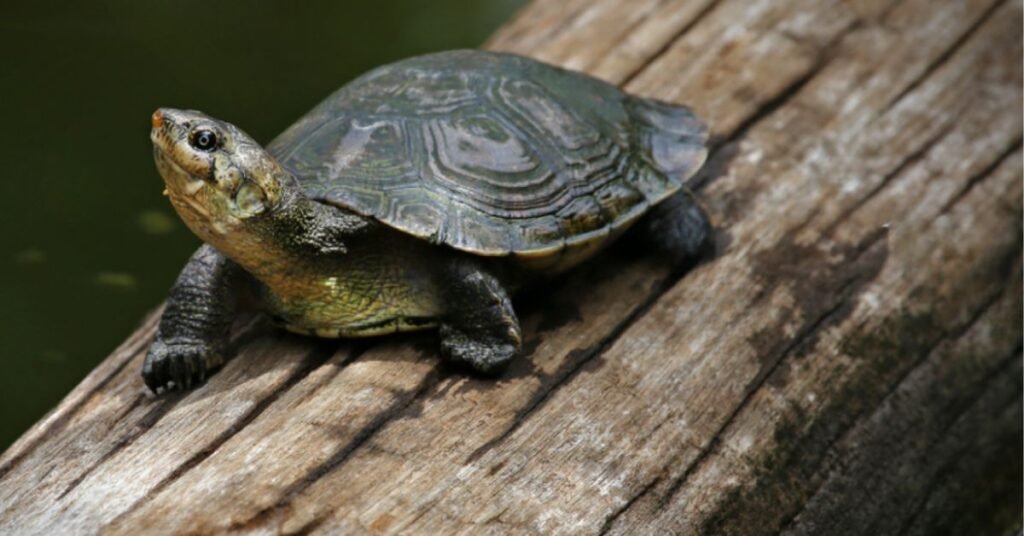The Madagascar Big-Headed Turtle is the 25th most threatened turtle species. Another interesting fact about these turtles is that they are native to Madagascar. It means you will only find these turtles in Madagascar. If you are a turtle enthusiast, you may have some queries about this turtle, such as whether the Madagascar big-headed turtle diet is the same as others.
Their diet is fascinating and diverse, and their food habits show how adaptable they are to their environment. It is not common for pet owners to have these turtles in their hands, as they are already a critically endangered species with a 10,000-strong overall population.
Luckily, if you get one of these in your hand as a pet, or you are simply interested, you may want to know about their diet. So, today, we will be digging into the Madagascar Big-headed Turtle diet, feeding habits, nutrition requirements, etc.
Table of Contents
Madagascar Big-Headed Turtle Diet

Madagascar big-headed turtles are omnivores. Like any other omnivore turtle species, they eat both plants, greens, and meat.
Plant-Based Foods
Aquatic Plants
The Madagascar Big-Headed Turtle (Erymnochelys Madagascariensis) consumes various types of aquatic plants. They commonly eat plants, including water lilies, duckweed, and other submerged vegetation like elodea, hornwort, and anchors. These plants are crucial for turtles’ diets as they provide essential nutrients and maintain their health.
Fruits and Flowers
This species also feeds on fruits and flowers that fall into the water from overhanging vegetation. For example, they will eat aquatic fruits, including water chestnuts (Trapa natans) and lotus (Nelumbo nucifera) if they are available.
They may also eat other fruits like melon, apple, berries, etc. However, in their natural habitat, these types of fruits are not accessible to them. If you luckily have one of these endangered turtle species as a pet, you can serve fruits that other omnivore turtles eat.
Serve in tiny batches and wait for their reaction. Such fruits and flowers not only add variety to their diet but also offer different vitamins and minerals essential for Madagascar turtle’s health.
Madascar turtles are only found in Madagascar, and they are comfortable and adapted to Madagascar’s wild environment, weather, and available food.
So, it may be challenging for turtle owners to make this specific geo-location environment suitable for turtles. But as an omnivore turtle owner, you can introduce an omnivore diet to these turtles.
Animal-Based Foods
Invertebrates
The Madagascar Big-Headed Turtle strongly prefers invertebrates like Mollusks and crustaceans. Mollusks such as snails and clams are common prey for them due to the turtle’s powerful jaws, which can easily crush their shells. Crustaceans like crayfish and small crabs are also part of their diet.
Small Fish and Carrion
Occasionally, these turtles consume small fish and carrion. They are not active hunters but will eat small fish if they are readily available. They recycle nutrients by scavenging on carrion, which helps them get nutrients without putting much energy into it.
Both plant-based and animal-based foods help Madagascar big-headed turtles to thrive in various environments.
What Energy & Nutrition They Need to Eat to Stay Healthy

Like all animals, Madagascar Big-Headed Turtles need a balanced diet to survive. Here’s a breakdown of key nutritional components for their health and how they can obtain them.
Proteins
Proteins are vital for growth, repair, and overall health. Turtles get their protein from animal-based foods. For the Madagascar Big-Headed Turtle, this includes invertebrates like Mollusks and crustaceans, as well as small fish.
They forage and eat earthworms, snails, and shrimp. Live prey provides protein and stimulates natural hunting behaviors.
Calcium
Calcium is essential to the development of solid shells and bones. Without adequate calcium, turtles can suffer from shell deformities or weakened muscle contractions, which are especially problematic for pregnant females.
Foods rich in calcium include leafy green vegetables like Watercress, Algae (Chlorella), Dulse – a type of red algae, and Spirulina algae or seaweed like kelp. Additionally, crustaceans like shrimp and crayfish have hard exoskeletons that provide calcium.
Fats
Fats are an essential energy source and necessary for healthy cell function. Turtles typically obtain fats from the animal-based portion of their diet.
Foods like feeder fish (guppies, bass) and certain insects (crickets, mealworms) provide essential fats. However, it’s important to avoid excessive fat intake to prevent obesity and other health issues.
Vitamins
Vitamins, particularly vitamin D3, are essential for calcium absorption and the overall health of this Madagascar big-headed turtle. In the wild, turtles synthesize vitamin D3 through sunlight.
In captivity, they may require vitamin supplements or UVB lighting to meet this need. Leafy greens and vegetables such as squash and carrots are also good sources of various vitamins.
Minerals
Other minerals, like phosphorus and magnesium, are necessary for metabolic processes. Madagascar turtles receive these essential minerals through a varied diet that includes a mix of plant and animal foods. Foods like cuttlebone can also be added to the diet in their pet condition to provide a direct source of calcium and other minerals.
Feeding Behavior of Madagascar Big-Headed Turtles
Madagascar Big-Headed Turtles eat mainly during the day. Sometimes, they can be more active at night.
Activating at night reduces competition with other species and allows them to fill ecological niches. Cooler nighttime temperatures can make hunting easier and less stressful for these reptiles.
Feeding Techniques
Madagascar Big-Headed Turtles have strong jaws that crush hard shells. These adaptations are important for their diet, which includes Mollusks and crustaceans with hard shells. Their powerful bite also allows them to access nutritious soft tissues inside the animals.
When foraging, Madagascar turtles often feed near the bottom of streams or rivers. With their webbed feet, they dig through submerged vegetation.
Besides helping them find food, bottom-feeding helps their ecosystem cycle nutrients. As they stir up the sediment, they release nutrients back into the water, supporting the habitat’s health.
Seasonal Dietary Changes of Madagascar Big-headed Turtle

The Madagascar big-headed turtle’s diet can change with the seasons, influenced by the availability of different food sources.
Feeding Availability During the Rainy Season
Madagascar’s rainy season, which lasts from November to April, is full of aquatic plants and invertebrates. When there’s more rain, water levels in rivers and lakes rise, so there’s more food.
During this period, Madagascar big-headed turtles can have a varied, rich diet, which is crucial to their growth. They consume more aquatic plants, mollusks, and crustaceans.
Feeding Availability During the Warmer Months
In the warmer months, particularly during the dry season from May to October, water levels drop, and food availability decreases. As a result, Madagascar big-headed turtles may change their feeding patterns.
They might become more active during dusk and dawn to conserve energy and avoid daytime heat. During this period, their diet will probably shift to more hardy aquatic plants, small fish, and carrion, adapting to their available food resources.
How their Eating Habits Affect the Environment
Do Madagascar big-headed turtles, an endangered species, contribute to their environment? Yes, they are essential for their natural habitat.
Environmental Contributions
In its habitat, the Madagascar big-headed turtle contributes to the ecological balance. These turtles eat a lot of aquatic plants, which prevents overgrowth of vegetation. It can reduce oxygen levels in the water, which is vital to aquatic species’ survival.
Their eating habits keep the marine ecosystem healthy, ensuring other organisms can live well in it. For instance, unchecked plant growth on the surface of water can block sunlight and disrupt fish habitats.
Symbiotic Relationships
Madagascar big-headed turtles live in a network of symbiotic relationships with other species. While foraging and moving through their environment, they stir up sediment, which supports nutrient cycling and microbe growth.
These activities not only provide food for turtles but also benefit other species that eat these microorganisms. The Madagascar turtles also prey on invertebrates like Mollusks and crustaceans. It also keeps their populations in check so they don’t dominate the ecosystem.
Read More: Interesting Facts About The Madagascar Turtle
Bottom Line
The Madagascar Big-Headed Turtle isn’t picky about its food; it’s an opportunist, eating whatever it can find. This ability to adapt to its surroundings is a crucial part of its survival. From plants to tiny critters, it’ll try just about anything.
But here’s the catch: this turtle and its unique diet are in danger. Its home is shrinking, and finding food is getting more complex. We need to protect this unique creature and its watery world so it can continue to survive.
